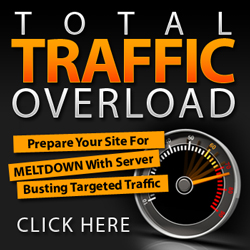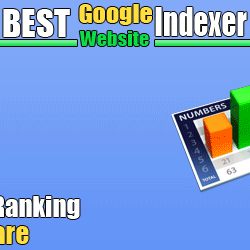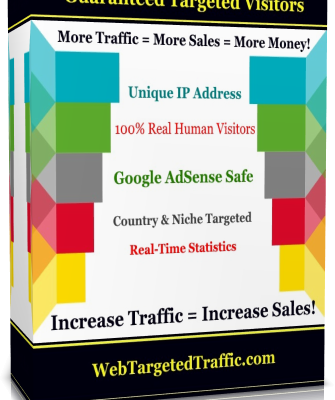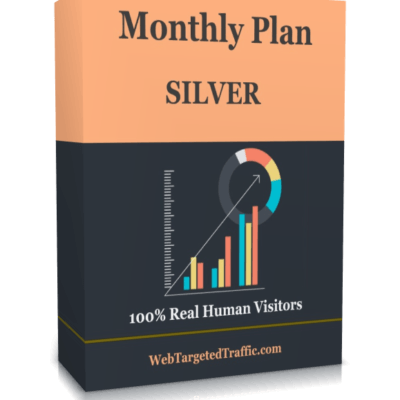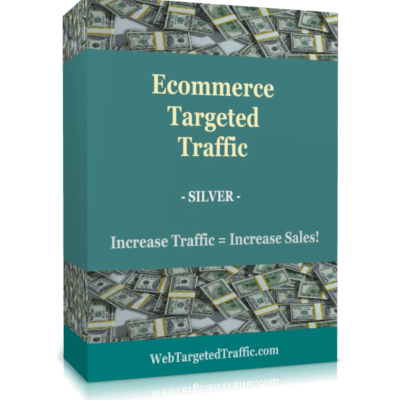Competitor research is a documented process that results in an action plan that works to benefit your business.
Table of Contents
What Is Competitor Research?
Competitor research is the act of profiling your competitors by gathering key information about them.
The activity is a little more refined than stalking a shop on Facebook or overhearing competitor reviews accidentally.
Instead, competitor research follows a set structure.
The results of such research are logged in a competitor dashboard for your whole team to access. It’s what we do with this information that counts.
Effective competitor analysis leads to innovation, development and growth.
Why do Competitor Research?
Because if you don’t know what they’re doing, what strategies they’re following, you won’t be able to outsmart them.
A competitor analysis will:
- Help your team build better marketing strategies
- Identify opportunities in the market that are currently under-served
- Help you take advantage of your competitors weaknesses to grow market share
- Allow you to make informed decisions about your strategy and ensure you can create sustainable competitive advantages
- Help you plan for future investments
What are the benefits of competitor research?
Without competitor analysis, your brand will fail to differentiate itself.
This happens by making ill-informed decisions like pricing a product too high or making your services too similar to others on the market.
Competitor research eliminates the chances of you making these mistakes because it gives you a look at the bigger picture.
As a result of competitor research, you will:
- Be able to differentiate your brand
- Push your brand’s unique benefits
- Be quick to identify opportunities
- Be aware of potential threats
- Have an ability to forecast trends
- Make smart development decisions
- Be inclined to innovate
- Learn from your competitors
Competitor analysis will help you:
- identify market opportunities that will increase your market share and brand awareness
- exploit your competitors’ weaknesses and convert their customers to your product or service
- provide information needed to plan future marketing strategies
- allow you to make well-informed decisions on how to develop your product
- Planning for the future. The most important byproduct of competitive research is that it will help you create a strategic plan for your business. This includes things like improving your product or service, using more strategic pricing strategies, and improving the promotion of your products.
If you want to be one step ahead of your competitors, you have to assess the status quo first. Knowing which areas you need to improve and where exactly can you gain competitive advantage easily, will help you shape your business decisions.
What should you include in a competitor analysis?
While performing a competitor analysis you will gather a ton of data. Which should you include in your competitor analysis report?
There are parts of competitors analysis that are common for all business types.
No matter your business niche, your analysis template should include:
- the business side of your main competitors
- the marketing activities of your competitors
- the customer service they provide
That’s a lot of information to uncover and analyse.
That’s why we prepared a step-by-step guide to competitor analysis! You can use this posts as an analysis template to make sure you have all the information you need.
Preparing for Your Competitor Research Step-by-Step Guide
So far, we’ve given you all of the moving parts of competitor research. But now it’s time to put them into practice.
There are seven key steps to competitor research. These are:
1. Classify your competitors
Let’s get a handle on who we’re actually analysing.
During your research, you’ll come across multiple companies that sell the same product or service as you. However, for competitor research — which is strategic and targeted — you should look at only your direct competitors, of which there should be no more than ten.
Ask yourself these questions:
- What is the user experience like on their website?
- Is it easy to navigate?
- Do you clearly understand the products or services they offer?
- Is their website mobile-optimized?
- How often do they blog and most importantly, is the quality of their content good?
- What topics do they blog about most frequently?
- What social platforms are they actively using to talk about their products and services?
- Is this content engaging their target audience?
The answers to these questions show you opportunities where you can outperform your competitors. You will want to pay close attention to anything they are doing well that you aren’t doing. This will help give you a better understanding of where you should be focusing your attention and resources.
While you still might want to be aware of your indirect competitors, these companies aren’t crucial to your business success — for the following reasons:
- Brands that don’t serve the same geographical areas as you
- Brands with the same solution, but a different customer
- Brands with a different solution, but the same customer
- Brands with the same product, at a different price point
- Brands with a slightly different product, at the same price point
Just to be clear, these firms are similar to you and could serve as a form of inspiration. However, they don’t pose an immediate risk to your business and must be relegated to the second tier.
2. Cover the basics
The first tab of your competitor dashboard should be super straightforward.
Here, you can list the names of your direct competitors with information on their core products and pricing structure. To get this data, visit their website and imagine what core principles are written on these competitor’s business plans.
Does one of your competitors offer an identical benefits package? Write it down. Does the other have a product with similar features? Make sure to mention it.
In this stage, you’re conducting a swift price check and a basic content review.
3. Analyze competitors’ SEO structure
Competitor analysis is essential if:
- You’re going live with a new website and want to study your industry and competitors
- Your paid promotions are failing, and you’re lagging behind the competition
- Your business is successful, but static, and you want to jump on industry trends
Your competitors are posting at the same rate as you, with similar content. Why are your competitors ranking higher in search engines? What are they doing differently to you? This is when you need to explore their SEO strategies. Find out what keywords they’re using, how they’re managing links, etc.
Your goal? To outrank them in SERPs. Here’s what you should be checking.
Where are your competitors using keywords?
- Page title
- URL architecture
- H1 and H2 tags
- Content
- Internal links
- Image alt text
- Meta description
- Social media
- Ads
Check the following:
- Domain authority
- Root linking domains
- Sitemaps – HTML, image, XML, video
- Page templates – how well a site is designed. Are their sites responsive, optimized for mobile devices? Is yours?
- Analyze their backlink strategies – which websites are linking to their sites? Are they linking to yours too?
- Blog topics and frequency
Not only should you check the SEO structure of the content but also the keywords your competitors are using. It’s called keyword gap analysis and it’s to determine which keywords your competitors are ranking for, that your website isn’t. Part of your competitor analysis is to find where the competition ranks in SERPs, and earn a higher ranking.
Once you have the results of your keyword gap analysis, you’ll be able to remodel your site. Look at the metadata, the site architecture, repurposing existing content that’s ranking badly, and writing new content that incorporates the missing keywords.
Now, it’s time to get technical. This is the part where your software comes to play.
You’ll want to play around with the aforementioned tools to dig deeper into the performance of their website and content, as well as analyse their SEO structure.
When it comes to any type of research, data is your friend.
This is because data allows you to be less subjective by giving you a quantitative measure that you can directly compare to your statistics.
Some analysts create numerous graphs to showcase their findings in this stage. Others will stick to one tab that provides vital information like search position and a glimpse into website and content performance.
How you visually relay this information is up to you. And it’s important not to get overwhelmed.
4. Ask your customers
Conducting market research can serve as a great way to find out a customer’s perception of multiple brands.
This data can be collected anonymously via YouGov or other survey providers.
If you feel confident enough, you can ask regular, loyal customers why they prefer your product over your competitors. This feedback may give you some first-hand invaluable advice as to why they always grab a coffee at your cafe or book an appointment at your clinic.
The differentiator could be simple. In the case of a cafe, it might be something like “the music is quieter in here” or “you don’t charge extra for oat milk.” But knowing this basic information gives you great power that you’ll want to highlight in your marketing.
5. Go under the radar
Especially if you’re a brick and mortar business, you’ll find it helpful to take a physical trip to a competitor’s premises to get a feel for the business and its perks.
You can also quickly assess a competitor’s performance and approach by snooping around their stand at an industry conference or purchasing a small item on their website.
Yet if you tend to hold grudges, you might want to allow different team members to get involved too.
Merging different opinions may help you to spot common themes.
After all, this covert type of research can encourage bias, so it’s always best to get multiple points of view.
6. Form a SWOT analysis
You’ve likely done a SWOT analysis of your business. This is the process of outlining your strengths, weaknesses, opportunities and threats.
You can also use this simple analytical framework for your competitors, using the data you already have.
Once you’ve contextualised the data you’ve gathered, this one-page analysis is a great resource to share across your whole team. While some members might not need to know the fine print of your customer’s policies, pricing and search positioning, they will appreciate the overview and do better work because of it.
7. Compare the customer experience
A crucial part of your competitors analysis should be focused on customer service. Many established companies that already gained a significant number of clients don’t have time or resources to provide exquisite customer service. That’s a gap you can fill in to distinguish yourself from your competitors.
Another thing you should keep an eye on is any technological innovation your competitors are using. Do they use chatbots to help their clients? Is there a live chat box on their website?
You can use all of these insights to improve your own customer service and gain competitive advantage.
Tools for competitive research
Software and technology now make it easier than ever to conduct competitive research. However, there are hundreds of competitive research tools on the market and narrowing down the right software can feel overwhelming.
This is why we’ve done the legwork and narrowed it down for you. Here are four tools you should consider using to conduct your competitive research:
- Google Alerts — This tool allows you to monitor the web for specific phrases. In the case of competitor research, you can track your brand name as well as the names of your rivals. You might also want to set an alert for broad industry phrases just in case a competitor interview, mention or commentary pops up.
- Buzzsumo — BuzzSumo lets you see how your content is matching up to your competitors’ content. You can see which content is shared more frequently on social media compared to others, and you can even schedule alerts on your competitors’ content which will make it easier to continue tracking them. This website tracks content performance allowing you to see how effective your competitor’s content is. This data-led approach removes all creative bias. So, before you ogle too much at a piece of visually-appealing content, use Buzzumo to check if it was successful first.
- Neil Patel’s Backlink Checker — This easy-to-use backlink checker will instantly show you a competitor’s backlink profile. All you have to do is copy and paste their domain and watch the links appear. In this way, you can see what type of sponsored content your competitor is publishing and track their latest press coverage.
- Moz — This tool is also handy for backlink analysis. Yet Moz has much more to offer. This SEO software will show the domain authority of every website as well as track your rankings so you can keep a closer eye on how your site stacks up compared to your competitors.
- Companies House — It’s not often marketers will need to know such structural information about a company. However, it won’t harm high-level marketers to know this resource exists. Companies House is a government-led portal that allows the public to learn more about the structure and accounts of UK companies.
- Ahrefs — Another highly-ranked SEO tool is Ahrefs. This tool is a haven for competitor data and the site even offers a seven day trial at a small cost if you’re not ready for a recurring financial commitment.
- SEMrush — This is one of the best competitive research tools on the market. It contains over 30 tools that can track things like SEO, PPC, keyword research, competitive research, and more. SEMrush will help you discover new competitors, find their best-used keywords, and analyze their ad copy. They have flexible pricing plans depending on your business needs. This tool promises to give you competitive intelligence by tracking your position in search versus a select few competitors. There’s a free version of this tool, as well as an unpaid trial of the subscription service.
- Mail Charts — For all those email marketers out there, Mail Charts is an email monitoring tool that will save you time and a bunch of junk mail. Without having to subscribe to your competitor’s emails, you can use Mail Charts to build competitive reports and sneakily take a peek of your rivals newsletter writing.
- Quora — This forum-style site allows you to know the juiciest details about your competitors — what their customers think of them. This observational tool allows you to effectively eavesdrop on customer’s conversations without having to be in the right place, at the right time.
- YouGov — According to YouGov itself, this website represents “what the world thinks” by compiling data and opinion scores on brands and topics alike. Using the search bar, you can find information about most mainstream companies. You’ll be met with a dashboard that shows popularity rating and ranking, as well as information on the brand’s demographic.
- SpyFu: This search analytics tool reveals the keywords websites buy on Google. So, once you’ve identified your biggest competitors, you can track every keyword they’ve bought. Plus, you can track every keyword they are ranking for and find the content and backlinks that helped them rank in the first place.
- Owletter: Owletter tracks and analyzes emails sent from a website. This allows you to track your competitors’ email marketing and see what is and isn’t working for them. To get started, you’ll need to sign up to join your competitors’ email list. Then, every time you receive an email, Owletter will take a screenshot, analyze it, and alert you to any useful information.
Conducting Competitive Research: Additioanl Resources
Society of Competitive Intelligence Professionals
The non-profit association for competitive intelligence professionals.
Hoover’s
Information on companies and industries.
Technorati
See if your competitors are blogging or have been blogged about.
Yahoo! Directory
A listing of industry associations to tap for competitive information.
Competitrak
Comprehensive tracking of competitive advertising and other marketing communications activities, including media spend and creative. However, their pricing might be prohibitive to a start-up.
Conclusion: How to write a competitor analysis?
Once you gather the data, it’s time to put it all together.
First of all, set your priorities. Depending on the aim of your competitor analysis, you should focus on different parts of your data.
If you want to analyse main competitors, take a closer look at their strong and weak features. This will help you determine the areas you need to improve and spots where you have an advantage and can exploit to build competitive advantage. You can distribute SWOT analysis among different departments, including marketing and product development.
Do you offer free shipping? Is your product manufactured locally? Do you offer unique customer service? Those are all features you could market to your potential customers that differentiate you from your competitors.
Once you perform a competitors analysis make sure the content is distributed across different departments at your company. Sometimes the most innovative ideas come from people you least expect it.
Competitive analysis, if done right, should help you:
- perform insightful SWOT analysis
- determine the market share of your competitors
- improve your products and services, in terms of product development, marketing, and customer experience
- help you make more informed decisions involving your marketing strategy
- determine the expected growth rate of your startup based on companies with established position on the market
Competitor analysis is an ongoing, time-consuming, and crucial process. It’s much more than just a list of your competitors.
Competitors analysis will give you all the information you need to get ahead of your rivals, excel in your industry, and become a thought leader in your niche.
Not Getting Enough Traffic? Not Converting Enough Leads? Here is WHY!
Learn more about how to increase organic traffic
If you want to increase organic traffic to your website, it’s time to put these tips into action. Don’t have the time to dedicate to drive more organic traffic to your website? WebTargetedTraffic is here to help.
We have over a decade of experience in helping our clients increase organic traffic to their websites. In the past five years, we’ve driven over 6.3 million leads for our clients. We know how to drive valuable traffic that turns into leads and sales for our clients.
The internet is full of websites that promise on offering guaranteed targeted traffic but fail on delivering it. At WebTargetedTraffic, rely on us and buy targeted website traffic because we have helped several clients expand the horizons of their business in a short period.
Real-time Native Push Notification Ads traffic is available!
We highly recommend our new Analytics real targeted Traffic for our clients
Try our QUALITY advertising websites traffic!
There are a number of self-service advertising platforms that allow you to get your message in front of a new audience in unique new ways.
Web Targeted Traffic is a trusted company world wide and is a legit website that sells targeted traffic.. They deliver targeted high quality real website traffic. That is why more than 75% of our clients are returning clients who already used our service in the past and believe on their quality and professional service.
Whether you are a well-known company or sole online business, Web Targeted Traffic is the most budget friendly way to reach your desired audience, get leads, boost sales, found new customers and generate brand awareness.

The result will be 100% real visitors who are actually interested in learning more information about a website such as yours!
WebTargetedTraffic.com is The Best Rated Website Traffic Seller of 2018, 2019, 2020 — Read our reviews here!
Check our Certificate of Website Traffic here…
So what are you waiting for? Choose your traffic package today and let us boost your business by sending thousands of real, unique visitors to your website.
Buy targeted traffic that converts. Increase your website traffic today with our range of affordable traffic services. Get targeted website traffic today!







